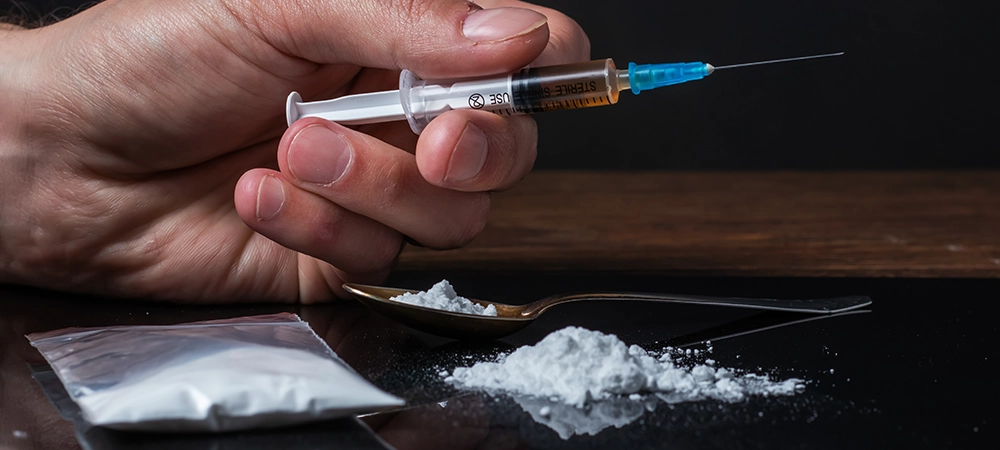Wait Time Challenges: How to Cope While You Wait for A Rehab Spot
When an addict is ready to take a step towards recovery, it is important that they act fast, as that thought can be changed very quickly. Most addicts have to struggle for a long time before accepting that they need help, so if they are seeking a substance abuse treatment program, the faster they can get into that program, the more likely it will be that they actually attend. The problem facing a large number of people with substance use disorders, however, is that if they require a publicly funded facility, they might have to wait weeks or months before the program has space. This can be very difficult to deal with for the addict, as they are left on their own to deal with what to do next.
A Look into the Problem
When seeking help for substance abuse issues, one of the best ways in which an individual can find success is by attending a rehabilitation facility. There are numerous facilities that treat addictions, but there is also a large range of fees that are associated with said treatment. People who cannot afford private health care, are stuck seeking treatment from government-run facilities which often have a long waiting list. This can be very frustrating for the addict, as it is very hard to stay on the path of recovery if they have to wait for treatment. When searching for advice on the matter, addicts are often told to simply call the treatment providers daily to see if spaces have opened up, and this can be extremely time-consuming. When addicts are not able to get the help they require right away, they often go back to drug or alcohol abuse, which means they have been defeated before they have even gotten started. This can be a very dangerous thing for people suffering from addiction, as getting help can sometimes be a matter of life or death. When using, the addict is continuously harming their body, and depending on the substance, this can have dire consequences, including death from overdose. Pregnant women are particularly at risk since drug use harms both mother and baby.
Wait times for Canadians vary from region to region depending on funding of the facilities and demand. If you are unable to pay for your spot in an addiction treatment and rehabilitation facility in Ontario, for example, it could take up to two months, which is a very long time for someone suffering from active addiction. Those looking for help can become very frustrated and often feel like there is no solution.
“I have no hope” a young woman by the name of Donna, tells me. Donna brought herself to the Emergency Room after downing a litre of vodka and a handful of pain medication. She didn’t want to kill herself, but after trying to deal with the pain of addiction for so long she felt as though she had no choice.
“I thought that if I could get myself into the Emergency Room, they would be forced to help me, but I am not sure if they will.”
Donna is a shell of a woman – grey skin, rotting teeth and extremely thin due to an eating disorder. As we wait in the Mental Health Emergency Room of St. Joseph’s Hospital, we talk over her options, none being that good. Donna tells me that she desperately wants to go to a treatment facility to get help with her alcoholism, but she has no money to do so. What she is told by the hospital is that she has two main options- go to the detox centre run by the hospital and hope that once the treatment is done, she is able to get a spot in the accompanying rehab facility or check herself into their psychiatric ward. While speaking with her I realize that her reluctance to go to the detox facility is due to the mixed genders: Donna has suffered sexual abuse and is not comfortable in the presence of men. But she literally only has two options, so after a bit of discussion, she chooses a detox.
After sending her off to detox, I did not hear from Donna for two months. I assume that she has found the help she needs in a residential program after doing the medical detoxification program, just as the nurse suggested. When I do hear from Donna, I quickly find out that this is not the case. She did receive help from the detox center but was unable to secure a spot in a rehabilitation facility after her treatment was over. She had been on her own for two months, struggling with addiction and waiting for a spot to open up in a government-funded facility. So when I heard from her two months after seeing her in the Emergency Room, she called to tell me that she finally had a space in rehab and would be checking in the next day. What has happened to Donna since then I do not know, but this story illustrates just how hard it can be when awaiting treatment for addiction. This story is all too common in the recovery community, and there are no easy answers for those seeking addiction services, who find themselves stuck with a lengthy wait period.
For those who do find themselves on a waitlist for treatment services, a few of the following strategies might help when stuck in limbo.
Detox Centre
If the wait time to get into an inpatient treatment program isn’t too long, then a patient might be able to get help from a detox centre. These facilities specialize in medically supervised detoxification programs, meaning they help addicts withdraw from drugs and alcohol in a safe manner. This part of the treatment process, however, is very short, usually only lasting about a week. After the detoxification process is finished, the patient is discharged, and if the rehabilitation centre is not ready to take them, then they are left on their own. As illustrated by Donna’s story, there can be long wait times, but detoxification centres can at least get the addict off their drug of choice, which is helpful when waiting for further treatment. It also gives the addict contacts within the treatment community, which can be a key factor when working towards gaining access to a rehabilitation facility.
Outpatient Services
Many rehab centres will have outpatient treatment programs that the addict can participate in while waiting for a spot in the residential system. These types of programs would have the patient participate in different group counselling sessions, and they would often also give them access to trained addiction counsellors who would be able to offer ways in which they could cope with the wait time. Though these treatment programs require the patient to have stable living conditions, they can allow the addict to get the help they need without the wait time. This can provide a way for the addict to get support while they are on the list for the residential treatment facility, which means they might have more success at staying sober while they wait. The problem with these programs is that they tend to require a lot of money in order for the patient to attend, which can make them less accessible to the general population.
There are, however, a few free community treatment programs that are not directly associated with rehabilitation facilities, in which the addict would be able to participate.
- SMART Recovery– Self-Management and Recovery Training is a self-help recovery program that can be found in many communities around Canada and is free to join. The program focuses on support groups that are led by former addicts, and they offer strategies for people to use when suffering from addiction. Not only do they offer in-person help by way of support groups, but they also have a wide range of online support which can be helpful for those who may be waiting for a spot in a rehabilitation treatment centre.
- The Jean Tweed Centre– this centre is for women who are suffering from substance abuse issues, and it is a great resource for women who might be on a waiting list for a treatment facility. They have free support groups which provide child care, and they offer numerous outreach programs that can help women in need of help for their addiction issues.
- Harm Reduction programs– these programs would not be great for those looking to eliminate substances altogether, but they can be a great help for people who simply need some help during the long wait for an open space in a rehabilitation facility. One such program is Breakaway Addiction Services, which serves the city of Toronto and focuses on creating safe spaces for people from the LGBTQ community to talk and get help for their substance abuse issues.
Twelve Step Programs
Twelve Step Programs for addictions, such as AA for alcoholics and NA for people addicted to heroin and other narcotics, are one of the most effective ways of getting and staying sober. By joining a 12-step program, the addict is able to find like-minded people with whom they can talk to about their cravings. This is important, as it gives them a sense of belonging that they may have never felt before. Active addiction is a very isolating place, as bad behaviour often drives family members and friends away from the addict. Those who had a very active social life during active addiction will want to be wary of the company they keep, as spending time with people who they used to use with can easily cause a relapse. By creating friendships in the twelve-step community, the addict is able to talk about their issues in a supportive environment with people who understand the world of recovery. While waiting for a spot in a rehabilitation centre, the addict might have many doubts about whether or not they will be able to recover from their addiction, which could make them give up on the idea of getting sober altogether. By joining a twelve-step program, the addict is able to see examples of people who have recovered from addiction, which allows them to have the motivation to wait for a spot to open up in the rehabilitation facility of their choice.
One of the important aspects of the Twelve Step Program is sponsorship. A sponsor is someone who has a year or more of sobriety, who has gone through the twelve steps, and who agrees to help the addict with their program. When waiting to get into a rehabilitation centre, the sponsor can offer advice on strategies to use when fighting the cravings for the drug of choice. This can mean the addict is more likely to stay clean and sober during their wait, which can enhance their overall recovery. If the wait time seems to be quite long, the sponsor can also start taking the addict through the steps, which can be very motivational when first becoming sober. Many rehabilitation centres use the twelve steps as part of their recovery program for patients, and starting the steps before they even get into rehab can be a great way for the addict to succeed in sobriety. The sponsor can also be a very good contact for the addict when their rehabilitation program is finished. If they start their relationship before going to treatment, then the addict is more likely to come back to the program after treatment is complete. Twelve Step Programs have the best success rates for long-term sobriety, and if a person is forced to wait for a spot to open up in a rehabilitation centre, then joining a local twelve-step group can be the best use of their time.
Dealing with wait times when suffering from addiction can be highly problematic. It becomes hard to keep the motivation to become sober if the first thing you have to do on your path to recovery is wait. For those relying on the public health care system for the treatment services they need, there is not much that can be done to speed up the waitlist process or add to the treatment capacity of the facilities, so a few strategies might be able to help in the interim. Attending a detox facility, using free community programs and joining a twelve-step program are some of the ways in which an addict can keep on the path and hopefully find success on the road to recovery.








